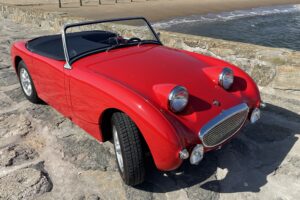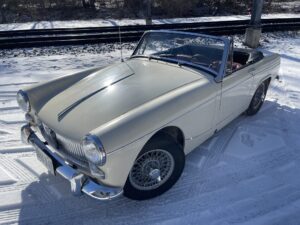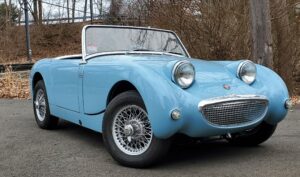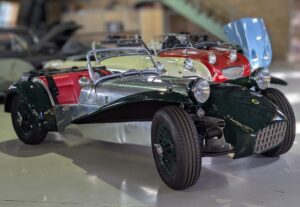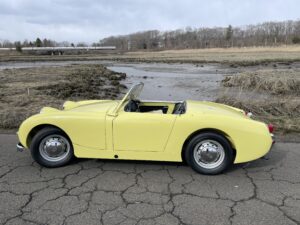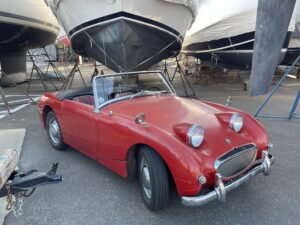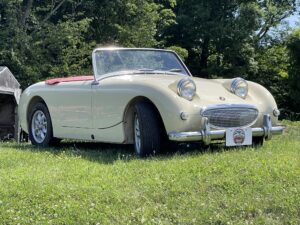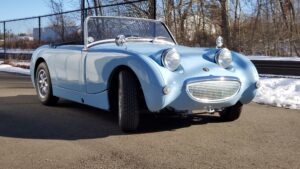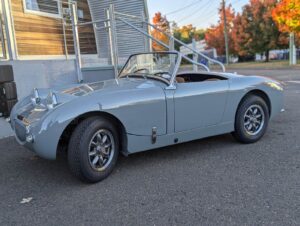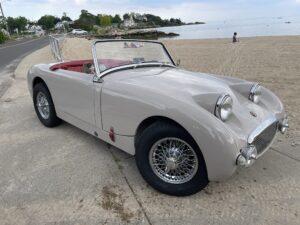Each and every day, we see things that come through our shop that just make us say “Yikes”. Today’s “yikes” moment comes to us from a car we recently brought in for a fuel system service. As you can see in the photos below, this fuel tank sender looks like it was recovered from a salvage dive on the Lusitania. The tank this sender was removed from looked as bad on the outside as it did on the inside.


It is unfortunate that such a critical system on this Bugeye was allowed to fall into this state of deterioration. (We drove the car onto the lift, by the way.) While this may be an extreme example, fuel tank maintenance is often something a lot of Frogeye owners overlook or neglect, because as long as the car is running, there’s no reason to worry, right?

Well, as the photos in this post can attest, there are MANY reasons why routine fuel tank maintenance is important. In addition to rusting away into oblivion, a more common ailment that befalls our beloved Bugeyes is a leaky tank. So how does a fuel tank on a Spridget leak?


There are three common ways a leaky tank manifests itself. The most common way is for the fuel sender gaskets to fail. Original fuel sender gaskets (and the gaskets on all of the commonly-available replacements) are made of cork, which, due to its exposure to a solvent like gasoline over time, will begin to shrink, warp, distort, crack, break… and then leak. When you fill your Bugeye’s tank up to the very top, the fuel level is actually slightly above that of the gaskets for the fuel sender, which means any kind of compromise in the integrity of the mounting gasket will allow fuel to fill the “dish” stamped into the tank where the sender sits. This fuel then runs down the sides of the tank and creates a distinct “trail” of ruined paint and stinky petroleum fumes.

Another common source of fuel leakage is around the base of the filler neck. Original Bugeye fuel tanks had the filler neck integrated into the body of the tank. This rigid connection, coupled with a moisture-containing foam gasket isolating the tank from the trunk floor, creates a weak point in the steel. This weak point, after years of repeated torquing back and forth and moisture buildup, can perforate or tear, meaning any time the tank is filled to capacity, fuel is allowed to leak from this union and create a mess.

The final way a fuel tank can leak is from the inlet fitting. Over the years, fuel lines corroded, collapsed, clogged, or otherwise failed and needed to be replaced. The fitting used on the tank end of the fuel line is a compression-type fitting that allowed the proper depth of the tube so the line seats perfectly into the receptacle on the front of the fuel tank. Unfortunately, when replaced, mechanics didn’t always know how far into the tank to seat the line. What this means is the fitting didn’t seat in the tank properly, meaning fuel is allowed to spill from it all the time and create the “snail trail” of peeled paint you see in the above photo.
So what can you do to repair all of these fuel tank maladies? Well, the good news is we have tons of experience in repairing these types of issues, and we offer several solutions to help you ensure your fuel system will leak no more! We offer complete fuel tank assemblies with rubber gaskets (instead of cork) and with a two-piece filler neck to help limit the weakening of the filler neck joint. Each of our fuel tanks is pressure tested in-house to ensure no leakage even under the most extreme of conditions.
We also offer new fuel tank inlet lines with the correct fittings for the new tanks to ensure no leakage occurs at the fuel inlet. (If you insist upon using an original fuel tank, you will need to use the old compression-style line.) We also offer complete fuel line kits with our solid-state electric fuel pump, one of our most popular upgrades that bypasses the often leaky and fallable factory engine-driven mechanical pump in favor of a more efficient and reliable electric one.
We offer all of these parts and more in our parts catalog! You can see our full parts selection by clicking here. If you’d like to take a look at some of our fuel-specific offerings, click on the photos below for more information!
